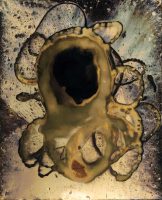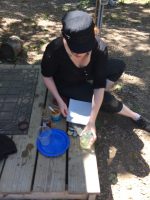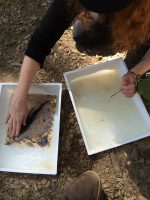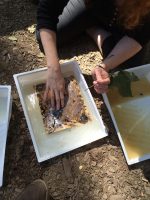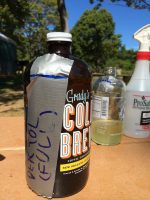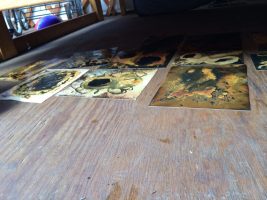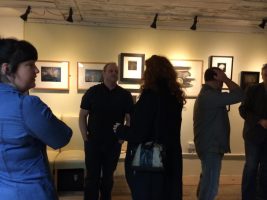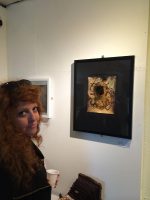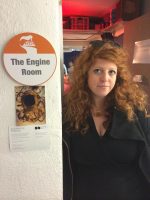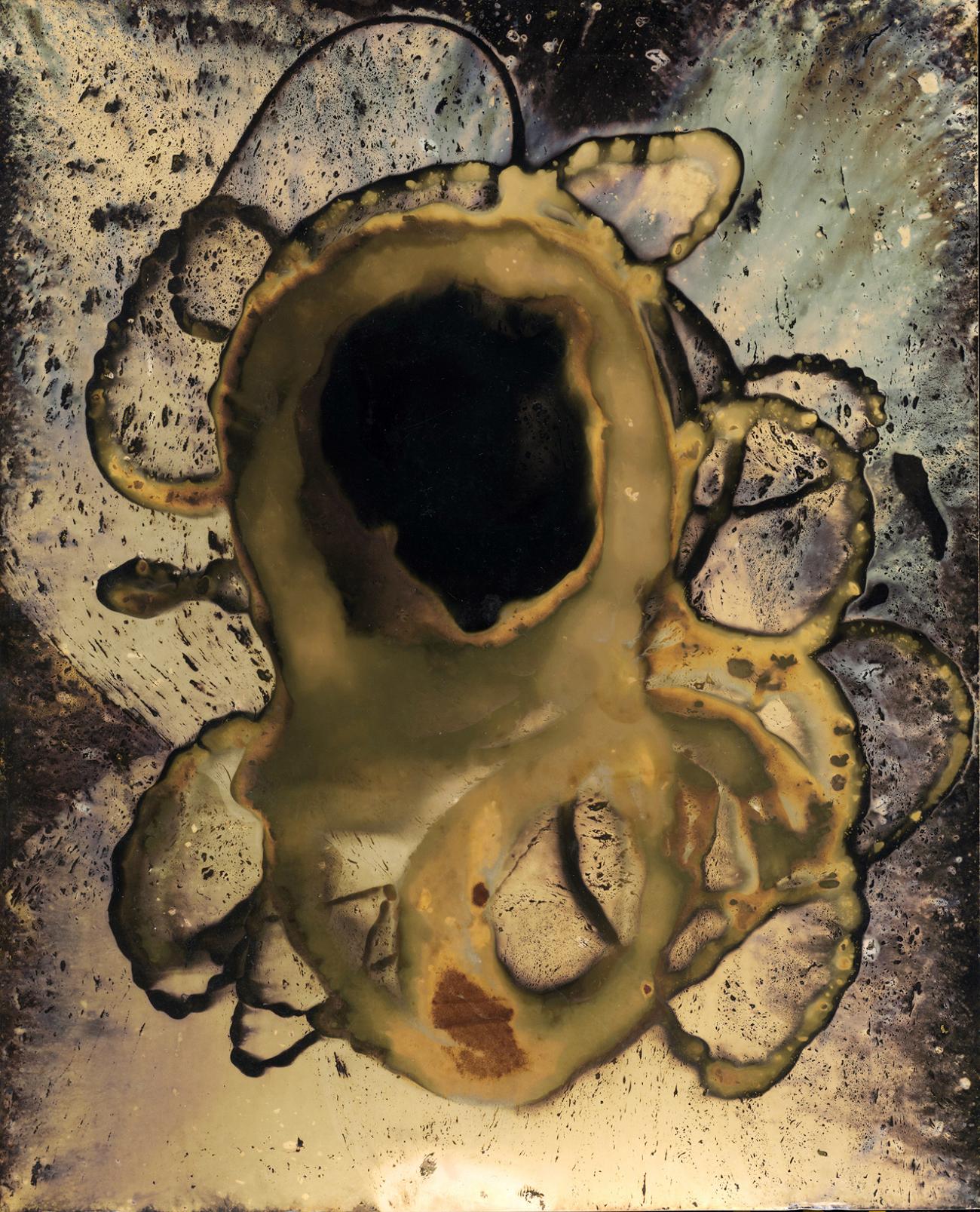
© Brittonie Fletcher
Our recently opened Alternative Process exhibition got off to a great start at the Private View, and the show features some really creative and innovative photography by artists working with Polaroid Lift, Wet Plate Collodion, Gum Bichromate, Photogram, Pinhole, Mordancage, Photogravure, Cyanotype and more. The show has prompted questions from visitors about the processes involved and the stories behind the works, so we thought it would be a good idea to meet the artists individually to find out more. We will therefore be bringing you a series of short interviews with the contributors throughout the exhibition, and first up is Brittonie Fletcher…
Who are you and what do you do?
I moved to Scotland in 2010 to get my MFA from Edinburgh College of Art. I'm now teaching alternative photography at Stills: Scotland's Centre for Photography and I love it. My dream job is to be teaching university level photography so i'm really pushing my students right now. I'll be teaching a mordançage workshop at the Double Negative Darkroom in London in November of this year and am scheduled to give a talk at the Doomed Gallery curated by Melanie King (also in this exhibition!) of LAPC (London Alternative Photography Collective). I'm really looking forward to these!
My arts background was originally in theatre and painting, then I moved on to sculpture – metals in particular. Meeting Dan Estabrook in early 2004 changed everything. He showed me how to put liquid chemistry on metal, I was sold. I saw his work at an informal slide lecture during a Penland concentration and kept feeling my heart skip beats. I moved away from metal working and blacksmithing towards photography. I got a great formal photography foundation from MassArt from Nick Nixon… I know my current work looks nothing like you'd expect a student of his to look- but he inspired me hugely, as did many other professors there. Rewind a little, I did take some classes at the Museum School of Fine arts- in metals and sound… at the Museum of Fine Arts Boston was the Adam Fuss exhibition maybe 2003…? I have the poster from it still, of his daguerreotype butterfly. I saw that, and his lecture and I loved his work… about that time I was given a book of Sally Mann's “What Remains” for my birthday. I guess those three, Mann, Fuss and Estabrook really inspired my career change.
What did you exhibit?
I had two pieces in the exhibition. Both pieces were chemigrams but one had an addition of mordançage added selectively to it. It's a relatively new project. I always seem to have about five different projects in different stages at all times. The untitled chemigram which was used for the publicity media I've been jokingly referring to as “Cthulu (Flies Through Time and Space)” of the “I love Lovecraft Wayyy Too Much” series. I've been telling this joke so often to so many people it might be taking over. I think I will make a side project dedicated to it. Back to chemigrams though. Chemigrams are both painting and photography. Making them requires silver halide-based photo paper, developer, fix and a selection of resists. I made these while on a camping trip with friends on Peddocks Island. I need to keep working, all the time and brought the stuff out with me to the island and used stuff my mom sent me for the trip as resists- canola oil, almond butter and honey and made them in the shadow of our yurt. I was making a lot of pieces with black circles and had some ideas I was trying to work out. The second piece, “Face”, the dark circles weren't working how I'd wanted but really liked most of the piece so I selectively applied the mordançage chemistry to the dark circles to bleach them out, raise the emulsion to add a second type of texture and leave to oxidise.
What made you take part in this exhibition?
Alternative Photography really appeals to me, in practice and thought. We are over saturated with images and there's nothing wrong with that, but I'm more excited by making things, being really involved in the process of it and of course teaching it. Naturally when I saw the call for an Alt Pro exhibition to showcase different processes I had to send some work along. I'm glad I did!
Have you attended the exhibition in person and if so what did you think?
It was really great to be introduced to some artists I wouldn't have known about and to see all the work in its non digital form- with this type of photography you have to see it in physical form. I don't mean that in a way to suggest it doesn't hold up in digital form, but I think half the point of *making* these pieces is for the physicality of them. I got there a little later than I'd liked, but John Kiely was kind enough to keep the place open later which was great. I got to meet a lot of people- some whom I've met online via photography forums- like Tony Richards who's a photographer who works with many techniques and processes including but certainly not limited to wet plate collodion. I had a great chat with Mark Voce which ended far too soon as I had to leave. Mark is also a multi- faceted photographer who also builds and customises a lot of gear for alternative photographic practice and makes BEAUTIFUL stuff.
Other than your own work, which of the other works in the show appealed to you and why?
Well, I've decided to pick three to talk about- as I tend to be wordy and could go on about all of them. First I'd have to say I'm pretty happy to see Amy Rocket-Todd's work in real form! I'm interested in her use and approach conceptually with collodion her mix of contemporary tools with historic process and sculptural elements is fresh and exciting. Rachael Edgar's wolves are pretty incredible- i was told they're 6 or 7 layer gum prints- and i like the hand touches of gold leaf and punching. I like her illustrative aesthetic and use of time in a still with the head changing position as if in a chase. This leans more towards printmaking and has a very timeless feel to it. Finally Andrew Chisholm's watergram… think Derges and Fuss but in colour! At first I thought he'd made an anaglyph print – I think I'd really like to view it with 3D glasses. I'd imagine he's spent about as much time going over the V&A's Shadow Catcher exhibition as I have.. though I'm drawing more influence from Sudre and Codier's work at the moment. As I said before, I'm a huge alternative and cameraless person.
You can see the exhibition for yourself until Sun 7th December 2014, Saturday and Sunday 10am – 6pm at The Engine Room, Mill 1, Woodend Mills, Manchester Rd, Mossley, Ashton under Lyne, Lancs, OL5 9RR.(Viewing by appointment during the exhibition, contact John at The Engine Room on 07736 849 388) For further information see our previous post here.
You can find out more about Brittonie Fletcher's work at her website here, and we will be bringing you an interview with another one of our Alternative Process exhibitors very shortly!
Photographs of Brittonie at work courtesy of Roddy Shippin.
